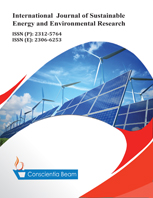The Relationship Between Low-Carbon Finance and Sustainable Development: A Case Study of Industrial Bank of China
DOI:
https://doi.org/10.18488/journal.13.2018.71.24.34Abstract
The action plan of China-proposed One Belt One Road initiative play a significant role of sustaining the green and steady growth of Chinese economy. Meanwhile, it also brings tremendous opportunities and challenges for low-carbon economy. Developing low-carbon finance is necessary for developing low-carbon economy in China. Commercial banks' primary objective is to maximize profits, so they inevitably pay attention to the influence of competitiveness and earnings after developing carbon finance. Industrial Bank as China’s first bank joining Equator Principles is the typical example of commercial banks which develop low-carbon finance. This paper analyzes the total assets, non-performing loan ratios and net capital of the bank and concludes that if a commercial bank can do a good internal management, the development of low-carbon finance will promote its sustainable development. In other words, the sustainable development based on low-carbon finance will generate visible benefits to the bank.

